Unmasking the Silent Foe in Alaskan Homes
In Alaska’s unique and often challenging environment, a silent adversary lurks within our homes, hidden yet pervasive. This threat, mold growth, is commonly underestimated but can become a significant problem, particularly in the presence of stagnant water. Alaska’s specific climate conditions make this issue even more pertinent.
This article takes you through the peculiar relationship between stagnant water and mold growth, a scenario particularly relevant in the Alaskan setting. We’ll explore how the state’s distinct climate can transform seemingly harmless corners of your home into ideal habitats for mold. From moisture-laden basements to concealed water leaks, we’ll uncover how these Alaskan household conditions foster mold proliferation.
But our exploration doesn’t stop at identifying the problem. We delve into the crucial role of professional mold removal, a vital step in Alaskan homes. You’ll discover why mold removal isn’t just another DIY task and how expert intervention is vital to protecting your living environment against this stealthy intruder.
Whether you’re a long-time resident, a new settler in Alaska, or simply interested in maintaining a healthy living space, this article is your guide. We aim to empower you with the knowledge and strategies needed to confront and conquer one of Alaskan homes’ most subtle yet critical hazards: mold growth, stealthily encouraged by stagnant water.
The Science Behind Mold Growth
Mold, an uninvited guest in our homes, operates stealthily. To combat it, we must understand its biology and the conditions in which it thrives. Mold spores, the seeds of this problem, are omnipresent in our environment, floating invisibly through the air. These spores are benign in their dormant state, but they transform into the problematic mold we recognize under the right conditions.
Stagnant water is the catalyst for this transformation. When water sits idle, it increases the humidity in its surroundings, creating an environment that mold spores find irresistible. This heightened moisture level and reduced airflow provide the perfect breeding ground for mold. In these conditions, mold spores awaken from their dormancy and multiply rapidly.
But why is this phenomenon more pronounced in areas with poor ventilation or where water accumulates? It’s a matter of environmental stability. Places like basements, under-sink cabinets, or even behind walls where leaks go unnoticed offer a stable haven for stagnant water. These areas maintain a consistently humid environment without regular air movement – ideal for mold growth.
The situation becomes even more complex in Alaska, where the climate can vary dramatically. The combination of cold outside air and indoor heating can increase indoor humidity levels. This is especially true in tightly sealed homes designed to conserve heat, where ventilation is often limited.
The result is pockets of stagnant, moist air where mold can flourish unnoticed. Part of managing this indoor humidity involves addressing external factors such as ice buildup on roofs, which can be both a symptom and a cause of excessive moisture.
Understanding this science is crucial. It’s not just about the presence of mold; it’s about creating an environment where mold cannot thrive. By controlling moisture and improving airflow, we strike at the core of the problem, inhibiting the conditions mold needs to grow. This knowledge is a powerful tool in our fight against mold in Alaskan homes, helping us to create healthier, mold-resistant living spaces.

Image Source: safeairfast.com
Identifying Common Sources of Stagnant Water: The First Step in Mold Prevention
In the battle against mold in our homes, particularly in Alaska’s unique environment, the first line of defense is identifying where stagnant water, mold’s best ally, comes from. This task can be challenging, as stagnant water sources are often not obvious and can be easily overlooked.
The usual suspects in most homes include leaky pipes and roof leaks. These issues can be insidious, often hidden within the walls or under floors, slowly creating an environment conducive to mold growth. Even small, seemingly insignificant leaks can contribute to a more significant problem over time.
Poor drainage systems are another common source of trouble. Water can accumulate and stagnate in areas like basements, where drainage is often inadequate. This is particularly problematic in Alaska, where melting snow and ice can exacerbate drainage issues, leading to more frequent and severe water accumulation.

Image Source: realtimelab.com
Bathrooms and kitchens are also prime areas for mold growth due to their naturally high humidity levels. Activities like cooking, showering, and washing dishes generate a lot of moisture in these spaces. If a bathroom or kitchen lacks sufficient ventilation, this moisture has nowhere to go, turning these areas into ideal environments for mold to thrive.
In colder climates like Alaska, another source of stagnant water can be condensation. When warm, moist indoor air comes in contact with colder surfaces like windows or poorly insulated walls, it can lead to condensation. If not properly managed, this moisture can contribute to the mold problem.
Identifying these common sources of stagnant water is crucial. It’s not just about fixing a leak or improving ventilation; it’s about understanding and interrupting the cycle that allows mold to grow. By tackling these issues, homeowners can take a significant step toward preventing mold infestation and ensuring a healthier living environment for themselves and their families.
The Imperative of Professional Mold Removal: Why Expertise Matters
The allure of a do-it-yourself (DIY) approach to mold removal can be strong, tempting homeowners with the promise of cost-saving and immediate action. However, this route often leads to inadequate eradication and can unintentionally exacerbate the problem. This risk is particularly pronounced in Anchorage and similar environments, where unique conditions favor mold growth.
Professional mold removal services are essential due to their comprehensive approach. They go beyond merely addressing the visible mold; they tackle the underlying issues causing the mold growth. This depth of treatment is something rarely achieved through DIY methods.
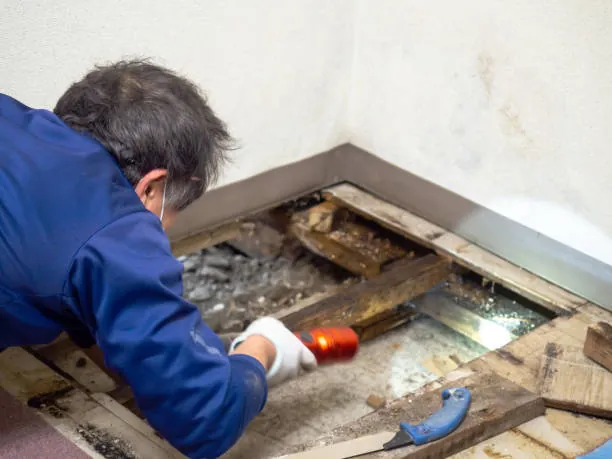
A key advantage of professional services is their access to specialized tools and techniques. They use industrial-grade dehumidifiers, air filters, and other advanced technology to manage critical factors like humidity and air quality. These tools are crucial, especially in places like Wasilla, where climatic conditions can contribute to indoor moisture problems.
Professionals bring a deep understanding of different types of mold and the most effective ways to remove them safely. They are skilled at detecting hidden mold, assessing the full extent of an infestation, and devising a comprehensive removal strategy. This expertise ensures the complete eradication of mold, including spores that may not be visible.
Beyond removal, professionals also focus on prevention. They can identify the moisture sources in your home and suggest practical ways to address them. This aspect is vital in preventing the recurrence of mold, a common issue in areas with fluctuating indoor and outdoor temperatures like Anchorage.
Moreover, attempting to remove mold without proper knowledge and tools can pose health risks. Disturbing mold colonies release spores into the air, potentially worsening health issues, particularly for individuals with allergies or respiratory conditions.
Therefore, while DIY solutions may appear appealing, the need for professional mold removal is paramount. This expertise is not just a short-term fix but a long-term investment in the health and sustainability of your home, especially in climates prone to mold recurrence.
The risks associated with mold are not limited to structural damage; they extend to hidden dangers that can significantly impact health and well-being, leading us to the next critical topic: The Hidden Dangers of Mold.
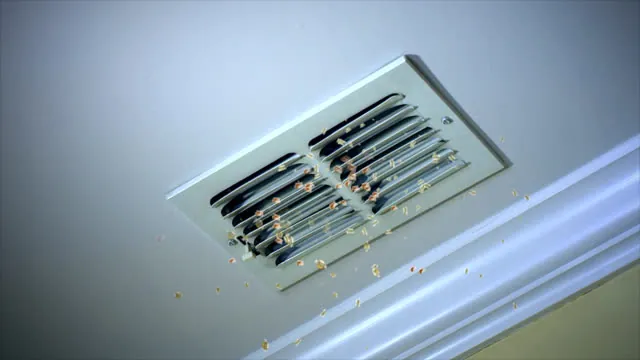
The Hidden Dangers of Mold: What You Can’t See Can Hurt You
One of the most deceptive aspects of mold is its ability to remain hidden. Mold doesn’t always announce its presence with visible patches on walls or ceilings. Instead, it often lurks unseen, hiding in wall cavities, beneath carpets, or other concealed areas of your home. This stealthy nature of mold makes it a particularly insidious threat.
The hidden mold is more than just an invisible nuisance; it poses significant risks to your home’s structure and its inhabitants’ health. Within wall cavities and under flooring, mold can silently eat away at the materials that make up your home, weakening structural integrity over time. This damage can go unnoticed until it becomes severe, leading to costly repairs and potential safety hazards.
Health risks are another major concern with hidden mold. Even if not visible, prolonged exposure to mold spores can lead to various health issues. These can range from mild allergic reactions like sneezing and skin irritation to more serious respiratory problems. For individuals with pre-existing conditions like asthma or compromised immune systems, these health effects can be even more pronounced.
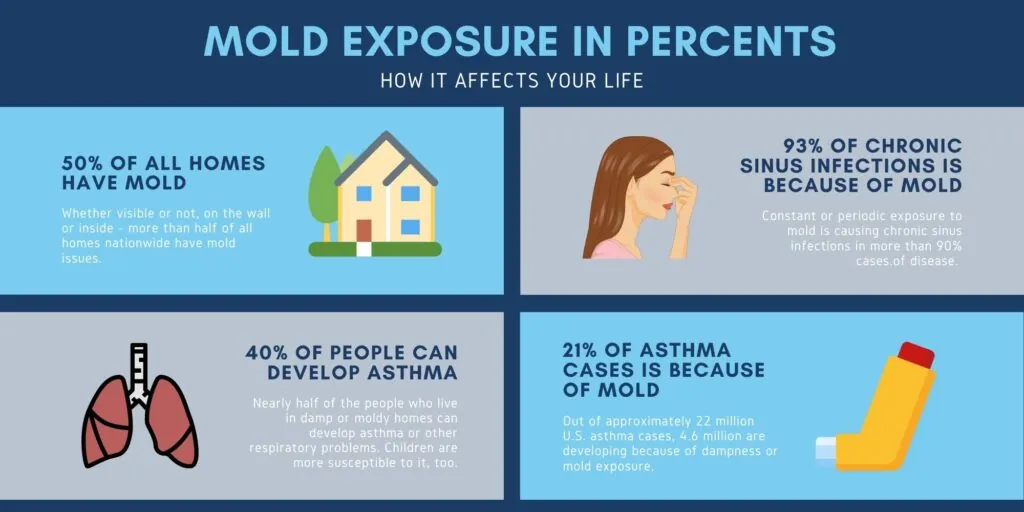
The hidden nature of mold underscores the importance of professional assessment and removal. Professionals have the expertise and tools to detect mold in hidden places, assess the extent of the infestation, and safely remove it. This is crucial in ensuring that all traces of mold, both visible and hidden, are eradicated from your home.
Given the risks associated with hidden mold, it’s clear that prevention is critical. Homeowners can safeguard their homes and health against this hidden danger by taking proactive steps to prevent mold growth.
Preventative Measures Against Mold: Safeguarding Your Home
Preventing mold growth is far more manageable than dealing with an established infestation. Homeowners can implement several effective strategies to keep their homes mold-free.
First and foremost, controlling moisture levels in your home is crucial. This can be achieved through the use of dehumidifiers, especially in naturally damp areas like basements or during times of high humidity. Ensuring that your home has adequate ventilation is also vital. Simple actions like using exhaust fans in bathrooms and kitchens, opening windows when weather permits, and ensuring that your home’s ventilation system functions correctly can significantly reduce moisture levels.
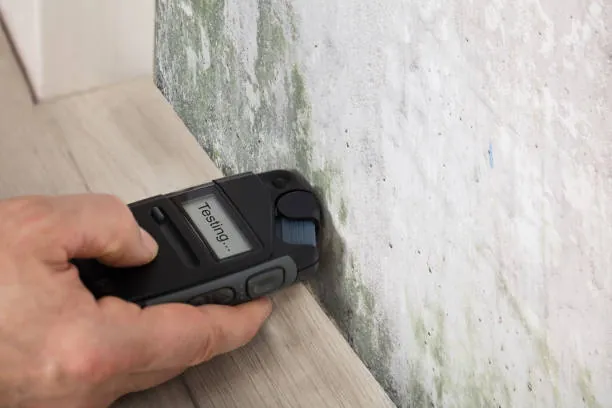
Regularly inspecting your home for signs of leaks and addressing them promptly is another critical preventive measure. Leaks in roofs, pipes, and around windows are common sources of excess moisture that can lead to mold growth.
Maintaining your home’s exterior is essential in preventing water from seeping into your house. This includes cleaning gutters, ensuring proper drainage away from the home’s foundation, and checking the exterior for any signs of damage or wear.
By implementing these preventive measures, homeowners can create an environment that is hostile to mold growth, keeping their homes healthy and safe.
The Health Implications of Mold: More Than Just an Allergy
The presence of mold in homes is not just a cosmetic or structural issue – it’s a significant health concern. Mold exposure can trigger various health problems, particularly affecting those with pre-existing conditions such as allergies, asthma, or weakened immune systems. Understanding these health implications is crucial for recognizing the urgency of mold prevention and removal.
For individuals with allergies, mold exposure can cause symptoms like sneezing, runny or stuffy nose, itchy eyes, and skin rashes. These allergic reactions can range from mild to severe, depending on the individual’s sensitivity and the level of mold exposure.
People living with Asthma face a greater risk when exposed to mold. Mold spores can aggravate asthma, increasing the frequency and severity of attacks. This can manifest as wheezing, coughing, tightness in the chest, and difficulty breathing. In some cases, mold exposure can even contribute to the development of asthma in individuals who did not previously suffer from it.
Source: osha.gov
Moreover, individuals with compromised immune systems, such as those undergoing chemotherapy, living with HIV/AIDS, or having other immune disorders, are particularly vulnerable to mold. In these cases, mold exposure can lead to more severe infections. For instance, a type of mold known as Aspergillus can cause a condition known as Aspergillosis, which can lead to serious respiratory complications and infections in other organs.
Even for people without pre-existing conditions, prolonged exposure to high mold levels can lead to health problems. Symptoms can include chronic coughing, headaches, fatigue, and, in some cases, can lead to more severe conditions like pneumonia or bronchitis.
Given these health risks, it’s clear that managing mold infestations isn’t just about property maintenance; it’s a public health issue. This leads us to another crucial aspect of mold infestations: their economic and legal ramifications.
Economic and Legal Aspects of Mold Infestation: Beyond Health Concerns
Mold infestations carry significant economic and legal implications for property owners and tenants. From a financial standpoint, the presence of mold can drastically affect the value of a property. Mold damage often requires extensive and costly remediation efforts, not to mention the potential for structural repair if the infestation has led to significant degradation of building materials.
In the real estate market, properties with mold issues can see a decrease in their market value. Buyers are generally wary of purchasing properties with mold problems due to the potential health risks and remediation costs. This can lead to challenges in selling or renting such properties, impacting the financial returns for property owners.
Legally, mold infestations can lead to various complications. Landlords, for example, can face legal actions from tenants if they fail to address mold issues adequately, as this can be seen as neglecting the duty to maintain a safe and habitable living environment. In some jurisdictions, specific laws and regulations require landlords and property managers to take prompt action to remediate mold problems.
In addition to financial implications, legal repercussions are a serious concern in mold infestations. There are numerous instances where mold has led to legal disputes and lawsuits. A notable example is the situation reported in 2019 involving Fort Meade Military Housing. In this case, 10 families filed a lawsuit against the company responsible for on-base housing at Fort Meade, Maryland. They claimed to have been provided with mold-infested residences and stated that the remediation efforts made were insufficient. This incident underscores the legal responsibilities that property managers and landlords have in providing safe, mold-free living environments. The case gained notable attention on social media, highlighting the widespread concern and public interest in such issues. Tweet by Ren, November 13, 2019.
This example illustrates the gravity of mold issues and their potential to escalate into legal matters when not adequately addressed. It also serves as a reminder of the importance of timely and effective mold remediation, not only for health and economic reasons but also to fulfill legal obligations and avoid litigation.
Mold in Fort Meade Military Housing Sparks 10 Families to File Lawsuit, against the company responsible for on-base housing at Fort Meade, Md., because they were provided mold-infested residences and offered insufficient remediation efforts https://t.co/ZVOv6UQrlc
— Ren (@Mandalorian_Ren) November 13, 2019
For homeowners, failure to disclose known mold issues during the sale of a property can lead to legal disputes and claims for compensation. Mold-related lawsuits can involve claims for property damage, health issues, and other losses from mold infestation.
As you can see, the impact of mold extends far beyond the physical damage to buildings; it encompasses significant health, economic, and legal dimensions. Understanding these aspects underscores the importance of proactive measures in mold management and the need for timely, effective action when dealing with mold infestations.
Conclusion: Tackling Mold in Alaska – A Call to Action
In Alaska’s unique and often challenging climate, the battle against mold, mainly from stagnant water, is critical and complex. Throughout this article, we’ve navigated the intricacies of mold growth, from the science behind its proliferation to its health, economic, and legal implications.
We’ve seen how Alaska’s specific conditions, such as its humidity and temperature fluctuations, create ideal environments for mold to thrive, especially in hidden spaces. The health implications are not trivial; from allergic reactions to serious respiratory conditions, the impact of mold on well-being can be profound. Furthermore, the economic and legal ramifications of mold infestations highlight the urgency of addressing this issue not just as a property concern but as a matter of public health and safety.
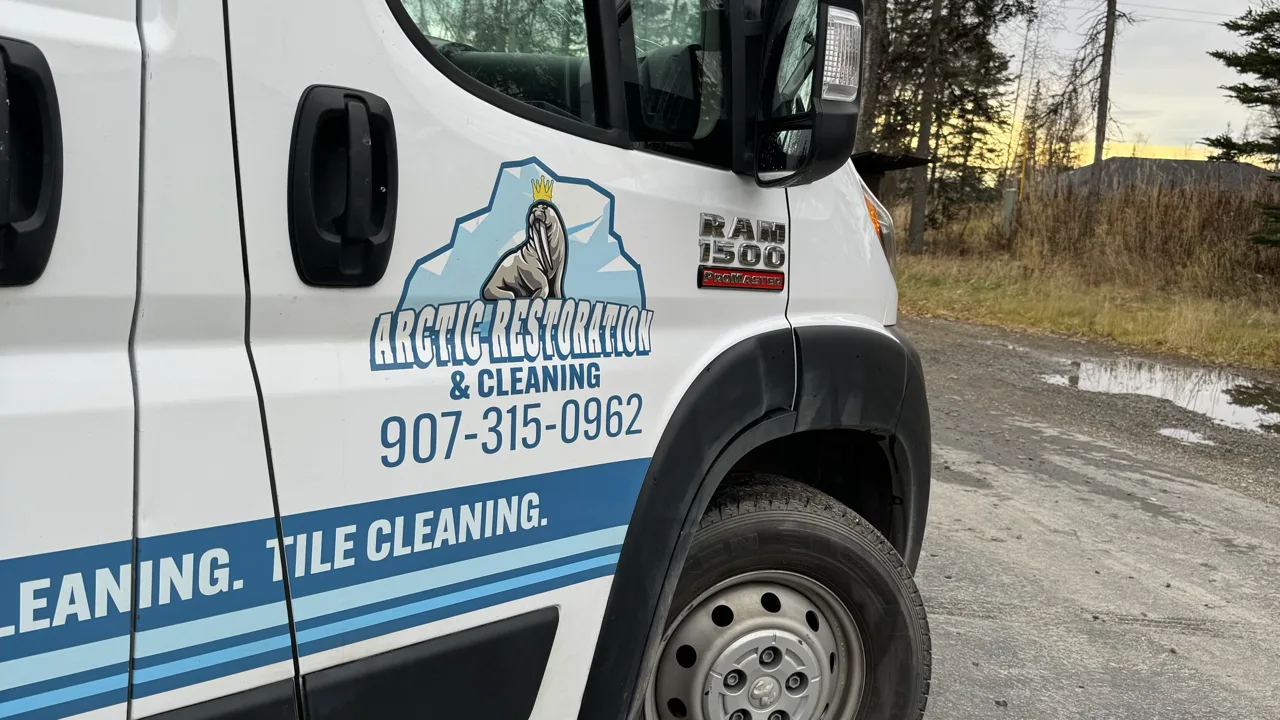
Arctic Cleaning and Restoration: Your Alaskan Home and Business Guardian
In the face of these challenges, professional expertise becomes indispensable. Arctic Cleaning and Restoration stands ready as your guardian against mold in Alaska. Our comprehensive services, from mold remediation to flood recovery, are designed to meet Alaskan homes and businesses’ unique needs.
With our deep understanding of Alaska’s specific environmental challenges and a commitment to using the latest in restoration technology, we ensure your space is not only mold-free but also safeguarded against future infestations.
Restoring Alaska, One Home at a Time
Don’t let mold compromise the health and safety of your living or workspace. Take action now and secure a FREE assessment from Arctic Cleaning and Restoration. Whether you’re grappling with the aftermath of a flood, dealing with a hidden mold infestation, or seeking preventive measures, we are here to provide immediate assistance and expert solutions.
Ready for a Healthier, Safer Environment?
Contact Arctic Cleaning and Restoration today at (907) 315-0962 or fill out the form below. Allow us to be your partner in creating a cleaner, safer environment restoring your space to its pristine condition. Remember, when it comes to combating mold and its effects, timely, professional action is vital.
Act Now for Peace of Mind
Don’t wait for the problem to escalate. Contact us for immediate assistance or explore our range of services and client testimonials at Arctic Cleaning and Restoration. Let us help you tackle your mold challenges and ensure a healthy, thriving environment in your Alaskan home or business. Fill out the form below now!
FAQs on Mold and Stagnant Water
Navigating the complexities of mold growth and its relationship with stagnant water raises many questions. Here, we’ve compiled a list of frequently asked questions to provide clarity and guidance on this important issue.
What conditions promote mold growth in homes?
Mold thrives in high humidity, stagnant air, and moderate temperatures. In homes, this often translates to areas with poor ventilation, such as basements, bathrooms, and kitchens. Leaks, whether from pipes, roofs, or windows, can also create ideal mold growth conditions by introducing excess moisture.
How can I identify sources of stagnant water in my house?
To identify sources of stagnant water, look for common problem areas like under sinks, in basements, and around appliances that use water (e.g., water heaters, washing machines). Check for signs of leaks, condensation, or water stains on walls and ceilings. Regular inspections in areas prone to moisture accumulation, like bathrooms and kitchens, can also help in early detection.
Why is professional mold removal recommended over DIY methods?
Professional mold removal is recommended because it ensures thorough mold eradication, including hidden growths. Experts use specialized equipment and techniques to safely and effectively remove mold, preventing its recurrence. DIY methods might temporarily reduce visible mold but often fail to address the underlying moisture problem and can lead to health risks if not done correctly.
What are the health risks associated with mold exposure?
Mold exposure can cause various health issues, ranging from mild allergic reactions like sneezing and itching to more serious respiratory problems. For individuals with asthma or compromised immune systems, mold exposure can lead to severe complications, including lung infections. Long-term exposure can also lead to chronic respiratory conditions.
How can I prevent mold growth in my home?
To prevent mold growth, maintain low humidity levels in your home, ideally between 30% and 50%. Ensure proper ventilation, especially in high-moisture areas like bathrooms and kitchens. Fix leaks promptly, use dehumidifiers if necessary, and keep your home clean and dry. Regular inspections and prompt water damage repair can also help prevent mold growth.
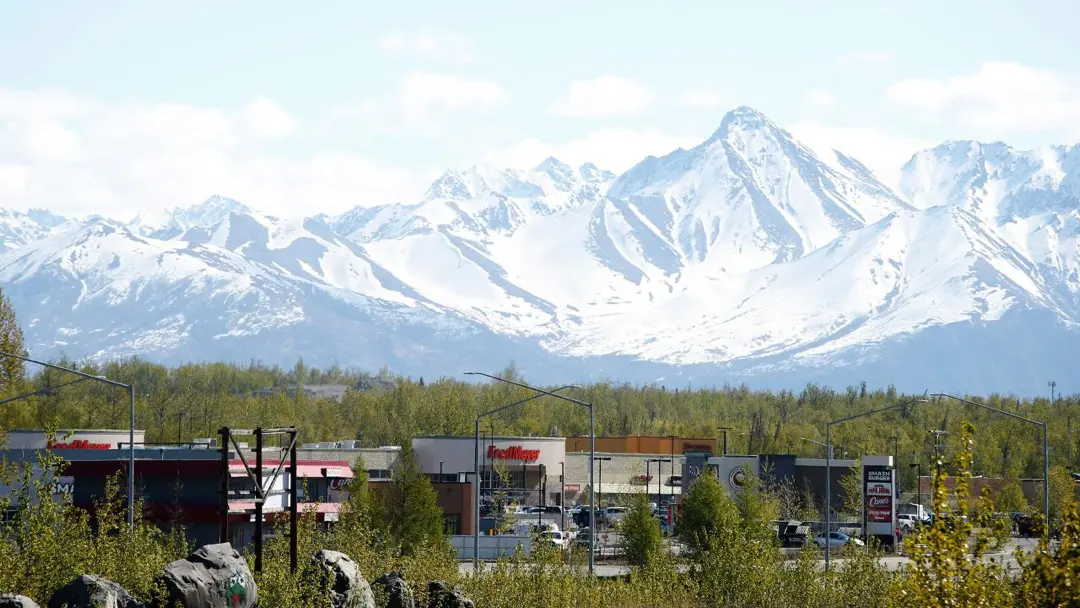
Ready to Protect Your Home from Mold?
For expert assistance in managing mold and stagnant water issues in your home, contact Arctic Cleaning and Restoration at (907) 315-0962. Our team of professionals is equipped to provide comprehensive solutions tailored to your specific needs. Don’t let mold compromise the safety and comfort of your home – reach out today and take the first step towards a healthier living environment.